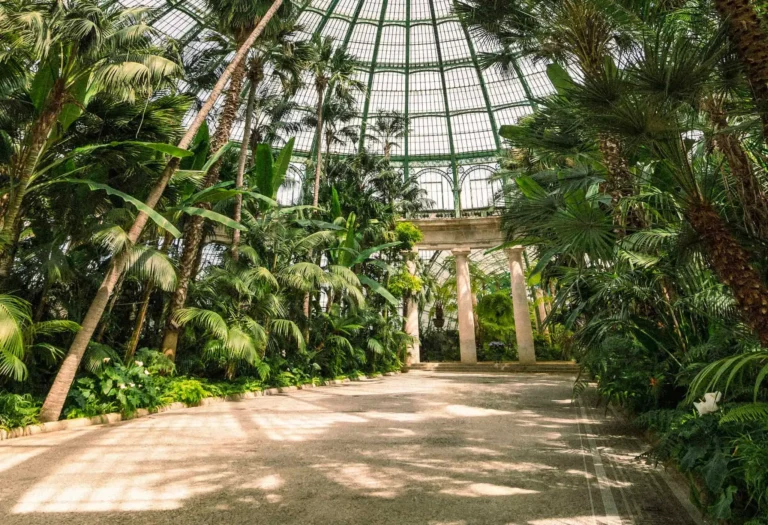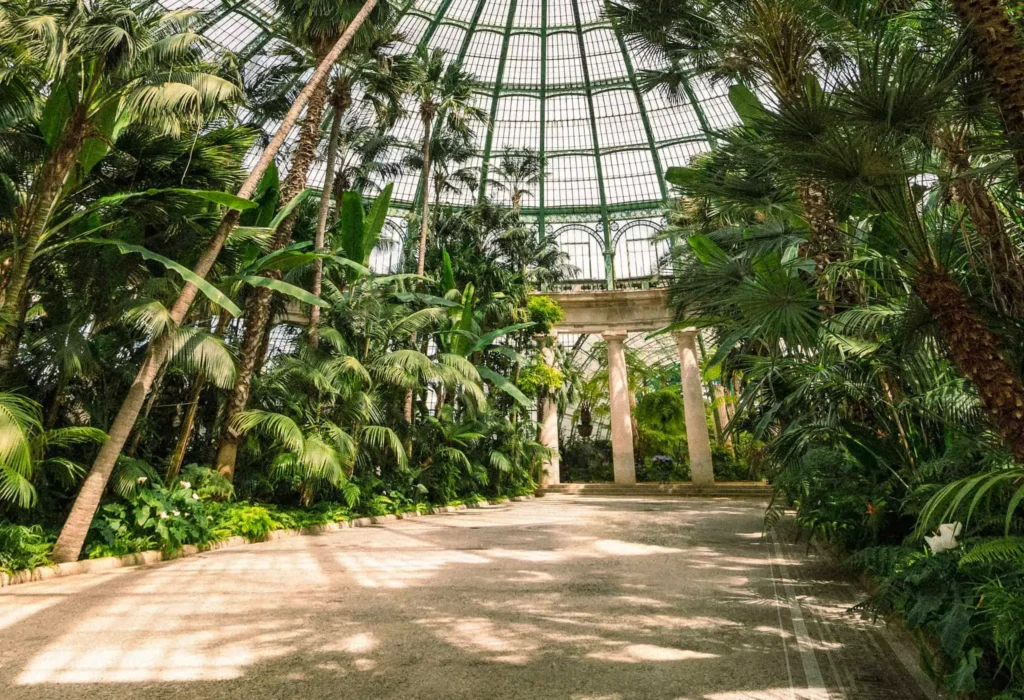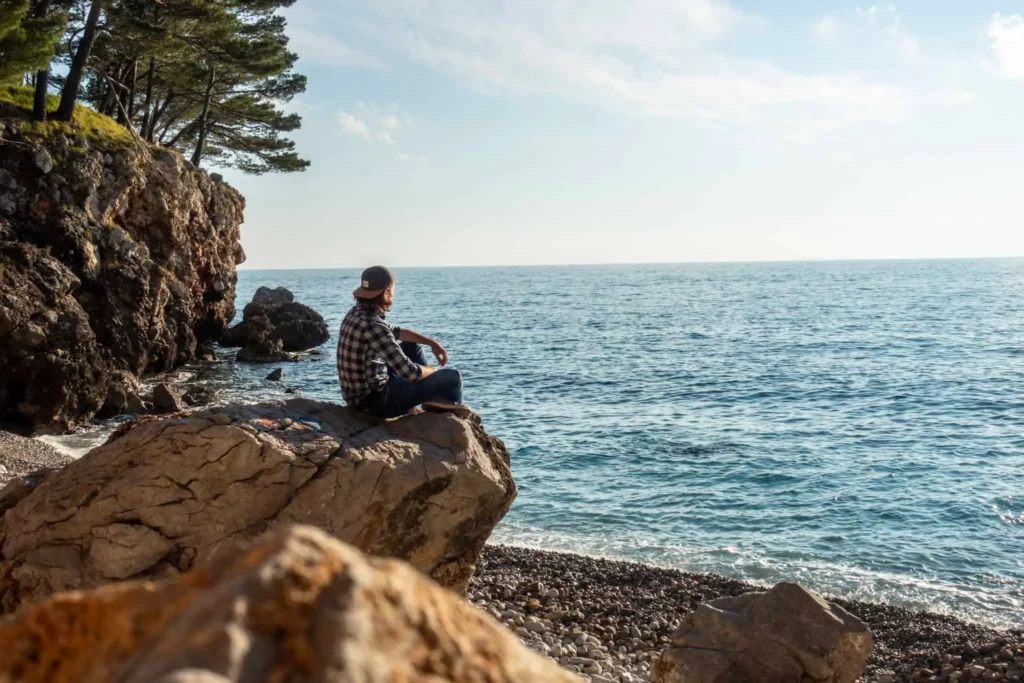| This post may contain affiliate links. Whenever you book or buy something through one of these, Giving Getaway gets a small commission, of which 100% will be donated to charity, without any extra cost to you! |
April 14, 2018, the first day of the month of Baisakh and the first day of the new year 2075. I am in Bhaktapur, one of Nepal’s three royal cities, the place where the rulers resided, with the most significant places, temples, and royal Nepalese cities: Kathmandu, Bhaktapur, and Patan. So far so good, but why is the Nepali New Year in April?
1. Vikram Samvat – The Official Calendar in Nepal
The most important trade routes connecting Tibet and India passed through the Kathmandu valley and it was here that Hindu teachers and Buddhist monks wandered and preached their messages.
The official calendar in Nepal is Vikram Samvat, established by the Indian emperor Vikramaditya in 56 BC. But how is it possible that in Nepal, where Buddhist monks wander along Himalayan routes and where you can find some of the most important Buddhist temples, the Hindu calendar is in force?
Despite the commonly held belief that Nepal is the kingdom of Buddha, Hinduism is the most popular religion in Nepal. In fact, there are only 10% of Buddhists, 80% of Hindus, and 4% of Muslims, the rest are minority religions, including Christianity and tribal religions.
The division between Hinduism and Buddhism, however, is not as clear as the statistics show. In the censuses, groups living in the northern regions of the country are considered Buddhists, but larger parts of the population are considered both Hindus and Buddhists at the same time.
Religious syncretism is especially visible in the Kathmandu Valley, where statues of Hindu deities stand next to Buddhist stupas, and you can ring a Buddhist bell next to a Hindu temple. In Nepal, Buddhism is almost seen as one of the varieties of Hinduism.
I don’t want to write a lot about the history of Nepal here, but at least for a moment, we need to go back in time to understand why there is such a strong Hindu influence in Nepal. Trying to figure out which of the religions was historically the first one in Nepal, the answer is Buddhism. Buddha was born in Nepal and his teachings were common in the whole country until Hindus from northern India came to the area.
In the 3rd century BC, the Indian and Tibetan tribes inhabiting Nepal were conquered by the Mauryan dynasty, which ruled India at that time. Emperor Asoka was a great propagator of Buddhism, so it was a period of intense religious development.
Around 200 AD, Buddhism began to lose its importance in favor of Hinduism, which reached these areas with the Lickhawi and Thakura dynasties. Along with Hinduism, the caste system also came to Nepal, which (unofficially) is predominant to this day.
This is just the beginning of the turbulent history of Nepal, a country that was little-known by the end of the 1940s, situated somewhere at the end of the world. Nepal was discovered by mountaineers, and then by the Hippy generation (mainly because of easy access to drugs).
2. The Sun and the Moon in One Calendar
April 14, 2018. I am in Bhaktapur. The first day of the new year 2075 (today in Nepal we have the year 2077). It is a lunar calendar based on the ancient Hindu tradition (Nepal – calendar). Nepali Bikram Sambat/ Vikram Samvat is approximately 56 years and 8 months ahead of the Gregorian calendar.
According to legend, in 57 BC, the ancient ruler of India Vikramaditya of Ujjain established the Vikram Samvat era after he defeated the Sakha tribes. But it is in Nepal (not India) that the calendar is officially in force to this day.
The solar cycle is primarily used to mark the dates of national holidays and the lunar cycle – to mark religious holidays. To help the solar years and lunar months come together (the solar year ends in mid-April and the lunar year ends in the last days of March), the thirteenth month is added to the calendar every three years.
One month is exactly 29 days, 12 hours, 44 minutes, and 3 seconds. The smallest unit of a calendar is tithi (day). Tithi is counted according to the moon cycle. The various tithi begin at different times of the day and the length of the day varies from about 19 hours to about 27 hours. Bikram Sambat in its traditional form does not use dates in the monthly cycle – 1, 2, 3 … 30, 31 – but only the names of consecutive days in the cycle.
But don’t worry if you are losing track of all these facts about the Nepalese calendar. Due to the large number of tourists, Nepalese people also need to keep the Gregorian calendar in mind. Anyway, to be on the safe side, instead of giving specific dates, use expressions like “a week ago”, “tomorrow”, or “in a year”.
If you are looking for information about various types of festivals in the country where Vedic mythology and ancient rituals are omnipresent, the Nepalese calendar will be useful to you.
Before looking it up, I had no idea who E.A. Powell was, but you can find this quote even on the ticket you have to buy to enter the old town. And it is true. Situated in the Kathmandu Valley, Bhaktapur was one of the capitals of Nepal until the 15th century. It is the third largest city in this country and is listed as a UNESCO World Heritage Site.
The historic part resembles those in Kathmandu or Patan. Each of them was the seat of kings and had the characteristic Durbar Square – a square with a complex of temples next to the palace. But Bhaktapur, unlike the other two cities, completely resisted the influence of the times, remaining as if frozen in the heyday of Newar culture.
The city suffered a lot from the earthquake in 2015. Its reconstruction is still underway and only the foundations of many temples are left or, in order not to collapse, supported by wooden logs. Even though one looks at the rubble with great sadness, the charm of the city remains intact.
Durbar Square is a prime example of a royal square. It delights with the smallest details in the architecture of palaces and temples, intricate carvings, and gold decorations. Almost everything here deserves special attention, but if I had to pick something out, it would be the Palace of Fifty-Five Windows and the Golden Gate.
It is also worth examining the ceiling with the entire Kamasutra (many positions and many details) on the ornaments of the beams supporting the roofs. Unfortunately, only Hindus are allowed to enter Hindu temples, but it is always worth asking around for a chance to do so. However, always remember to take off your shoes before entering.
Not far from Durbar Square is another beautiful spot – Taumadhi Square. Here you will find the highest temple – Nyatapola, and many interesting pubs and restaurants in the old town.
Some of them have roof terraces from where you can watch the hustle and bustle of everyday life. And personally, if you get the chance to do so, I recommend trying the Nepali dish “momo” (Nepalese meat dumplings).
3. Happy New Year!
April 14, 2018. I am in Bhaktapur. The first day of the new year. How do Nepalese celebrate it? Bhaktapur is full of people who look like colorful birds of paradise. Women with beautiful make-up and henna tattoos on their hands, usually wear a saree, which is a very long strip of material that cannot be sewn but pinned.
A few days later, I got the opportunity to wear a saree and even take on the challenge of putting on a beautiful outfit myself. It wasn’t easy, but I did it. Men are most often dressed in a traditional kurta (long shirt reaching the knees), also in all kinds of different colors.
People walk around, enter temples, sit on walls and sidewalks, eat ice cream, and take pictures. There is a stage in Taumadhi Square and some band is playing there. The music is hardly to my liking, but the people around are having a lot of fun. On this day the Bisket Jatra/Biska Jatra begins – a street party lasting nine days.

About a thousand people take part in the competition and the entire event lasts several hours. Apparently, during such a New Year’s party, even people get killed, but it seems that nobody cares and that every man wants to take part in pulling the rope. The festival is noteworthy, just make sure to stay away from the rope and the chariot.
4. Hinduism in a Nutshell
I don’t feel like I am a specialist in the field of religion, so if you are interested in more detailed information, please make sure to check the professional literature. I don’t have expert knowledge, so I will only mention a few of the most important rules of Hinduism.
- Respect for the holy books of the Vedas. It is believed that they have been created around 1800 BC. The books gather all the knowledge of Hindu man about the world of gods and people. They are six times larger than the Christian Bible.
- Belief in reincarnation
- Belief in karma, which is the law of cause and effect. In short, this means that it is human actions that create future experiences. Some Hindu schools believe that God has a very large role in providing karma
- Striving for liberation. This is the goal of spiritual development. In short, it is striving to be freed from the continual wheel of reincarnation. Of course, as there are many branches of Hinduism, there are many descriptions of what the state of liberation looks like and how to pursue it.
- The books of the Vedas hold the view that there is only one absolute (don’t confuse it with one “god”). Therefore, some refer to Hinduism as “pseudo-polytheism” and god is one, only with many incarnations.
- There is a belief in deities: devas, which are most often treated as emanations of one god. Their opponents are the asuras – powerful and evil creatures.
- Hindu monks are called Orchard – they are easy to spot because they are colorfully dressed, painted, and have long beards.
- There is a caste system and belonging to a caste is hereditary. Those who do not follow the rituals and duties of their caste will be reborn in the lower social class in their next incarnation.
- After death, the bodies are cremated – for common people, teak is used for cremation; sandalwood is used for aristocrats. After the body is burned, the ashes are dumped into the river.
5. The Living Goddess
After this short journey through Hinduism, I will tell you some interesting facts about practices that only take place in Nepal – the worship of the living goddess Kumari!
Kumari is a girl who has not yet entered puberty. She comes from the Shak caste of the Newar people, specially selected and considered to be the incarnation of the goddess Taleju. After the first menstruation, the goddess leaves the girl’s body. Lest it be too easy, there are several Kumari all over Nepal, however, the most important one is the Kumari King from Kathmandu, inhabiting the Kumari Ghar Palace.
Each time, choosing a Kumari is very complicated. A girl must not have any defects, she must be beautiful and healthy, well-mannered and courageous, and blessed with very specific physical features (e.g. the shape of nails, skin tone) – a total of 22 qualities of perfection. Kumari’s duty is to look after the King of Nepal and the entire Nepalese royal family – in practice, this is limited to putting a red tika mark on the king’s forehead.
A journey through Nepalese culture is like a never-ending story for the mind – and in the case of a more spiritual person, also for the spirit. If you add the aspect of a physical journey through Himalayan paths and royal cities, Nepal can absorb you completely.
My story was just a small grain of Hindu magic that surrounds this country. If you would like to read more about Nepal and especially about the role of Buddhism in this country, I invite you to keep an eye on the Giving Getaway Blog to read the second part of my Nepalese journey, which will be published soon.
And in case you plan to make a trip to Nepal (or any other place in the world), feel free to check our Customized Information Packages! We will help you plan a travel experience of a lifetime for you and at the same time, 10% of every payment will be provided for charity.
Follow Ania on Instagram where she frequently shares pictures, tips, and stories of her travels! Are you planning your next trip? Feel free to check flights, hotels, taxis, tours, and more right here on our website. With every booking you complete by using our affiliate links, we donate 50% of the commission to charity. This way you will enjoy your trip and do something good at the same time!





















Your article helped me a lot, is there any more related content? Thanks! https://www.binance.com/sl/register?ref=I3OM7SCZ